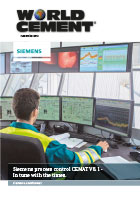Editorial comment
Policy makers are slow. Anyone following the climate change talks over the last several years will be more than aware of that. There’s a lot of speechifying about ‘playing our part’, ‘working together’, a lot of calls for action and finance. In comparison to the strong words, the pace of actual change feels glacial.
Register for free »
Get started now for absolutely FREE, no credit card required.
One could similarly look at the Ebola epidemic and accuse governments and institutions like the World Health Organisation of dragging their feet. There has been a lot of talk, but on 17 October UN Secretary General Ban Ki Moon reported that the trust fund set up to tackle the epidemic had a balance of just US$100 000. Shortly thereafter it was reported that the philanthropic arm of the global furniture store, IKEA, had donated more money to the cause than the governments of Spain, Luxembourg and Norway combined. No doubt it’s easier to dole out armfuls of cash when you don’t have to answer to voters – and of course, when you have the cash to spend in the first place. Many governments do not.
With that and the now accelerated efforts by big pharma to come up with a vaccination, reported within days of the official opening of Skyonic’s SkyMine® – a carbon capture and utilisation plant at the Capitol Aggregates cement plant in San Antonio (there’s a link, I promise!) – it got me to thinking about how much more responsive private enterprise is able to be than government bodies (when they so choose). Naturally, commercial companies are driven by profit. The global panic and media frenzy surrounding the Ebola epidemic no doubt makes a vaccination look a lot more desirable now, profit-wise, than it did when the virus first appeared 40 years ago; at that time there was simply no financial incentive for pharmaceutical companies to respond. Likewise, carbon capture and storage sounds like a potential solution to the greenhouse gas problem, while carbon capture and utilisation is the ‘holy grail’, as Victor K. Der, adviser to the Global CCS Institute, told the New York Times.* SkyMine® will convert the CO2 captured from the cement production process into usable products: bleach, hydrochloric acid and bicarbonate of soda that can be sold to the market. Skyonic has stepped up with enthusiasm and an entrepreneurial spirit where many other companies have seen only obligation and expense. Trying to bring profit to a sector that is traditionally thought of as not-for-profit (or frankly unprofitable) is certainly one means of generating a response.
For the cement industry, this means finding the commercial value in change. Switching to alternative fuels is already widely recognised as one means of improving a plant’s environmental impact and lowering fuel costs. Blended cements are another. What is the next step change for our sector and how do we embrace it while protecting our existing profit margins? Who will lead the industry towards this change? All answers gratefully accepted at katherine.guenioui@worldcement.com.


